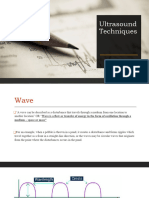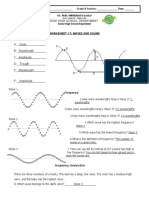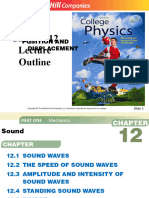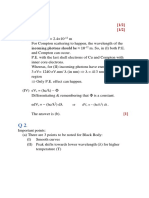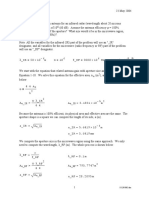0% found this document useful (0 votes)
9 views26 pagesLecture 6-Sound Wave
The lecture covers the mechanics of sound waves, including the hearing process, properties of sound waves, and their mathematical representation. It discusses how sound waves propagate through different media, the relationship between pressure and displacement, and the classification of sound based on frequency. Additionally, the concepts of sound intensity and sound level, measured in decibels, are explained, highlighting the thresholds of hearing and pain.
Uploaded by
ahmed.mohamed8009Copyright
© © All Rights Reserved
We take content rights seriously. If you suspect this is your content, claim it here.
Available Formats
Download as PDF, TXT or read online on Scribd
0% found this document useful (0 votes)
9 views26 pagesLecture 6-Sound Wave
The lecture covers the mechanics of sound waves, including the hearing process, properties of sound waves, and their mathematical representation. It discusses how sound waves propagate through different media, the relationship between pressure and displacement, and the classification of sound based on frequency. Additionally, the concepts of sound intensity and sound level, measured in decibels, are explained, highlighting the thresholds of hearing and pain.
Uploaded by
ahmed.mohamed8009Copyright
© © All Rights Reserved
We take content rights seriously. If you suspect this is your content, claim it here.
Available Formats
Download as PDF, TXT or read online on Scribd
/ 26













































